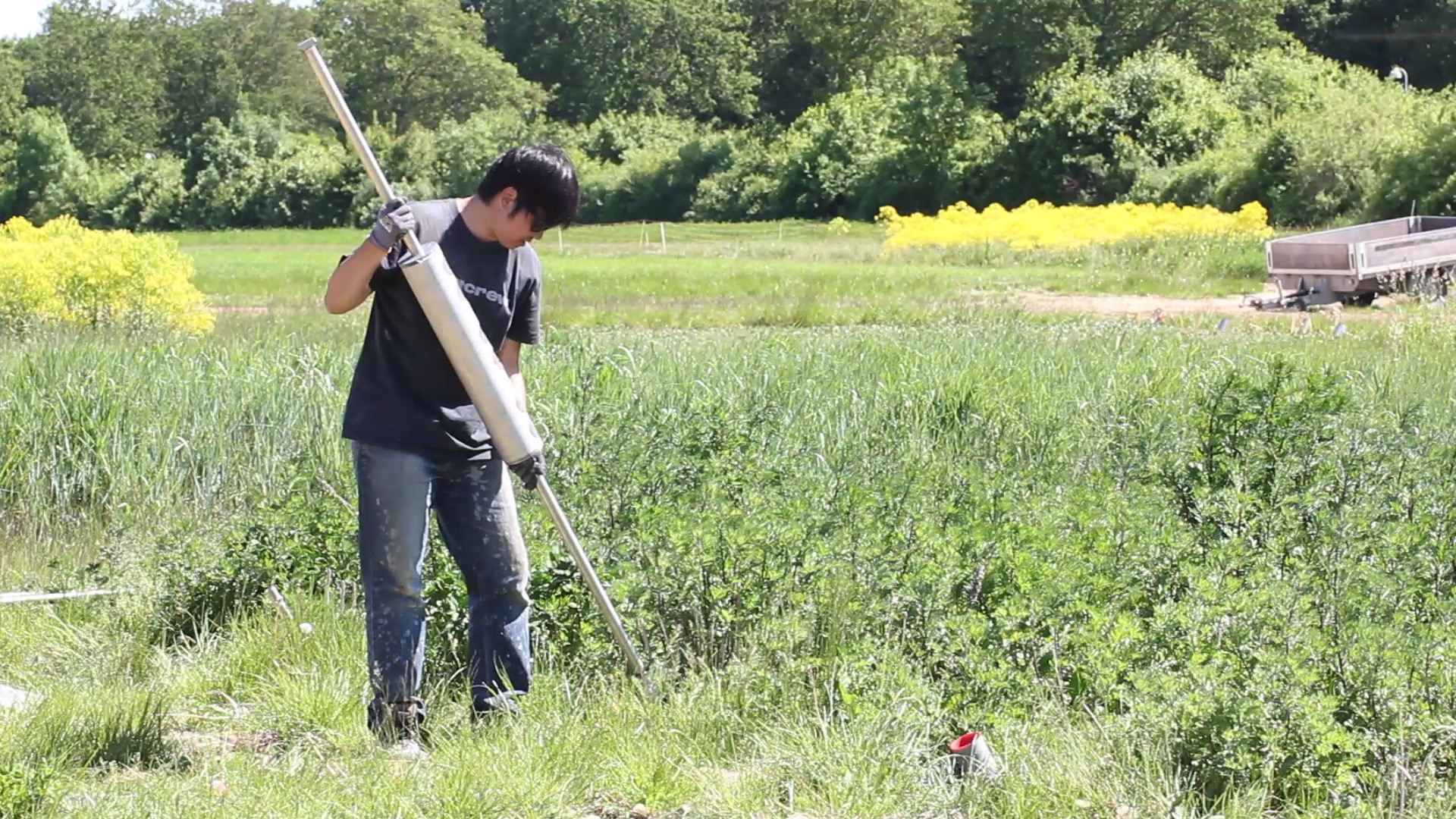New methods developed pave way for new insights
Eusun Han joined the Deep Frontier project in 2016 at its very initial phase, mainly to work in the field trial called DeepRootLab (DRL). Before that Eusun obtained his Ph.D degree from University of Bonn, Germany, studying on root growth in the subsoil under varying soil structural conditions. His main task in the Deep Frontier project has been developing the field facility and methods for quantification of root growth and function. To that end, the ingrowth-cores method and an AI-software were newly created to investigate deep roots’ function at unprecedent scales.

Root facility construction
“When I arrived, I was asked to create something new at Deep Root Lab,” Eusun says. “As a postdoc, getting involved in developing a research facility is a great opportunity, and not many postdocs have such a chance to do so. I was asked to establish a functional system for deep root study involving designing, testing and mass producing of metal tubes and cores.”
During the 1st year of his postdoc, he produced different prototype-tubes and -cores which were tested for validation of the ingrowth-core method. Luckily, the series of his attempts succeeded, and a scientific paper on this matter has just been recently published (Han et al. 2020). The paper describes the novel findings from the combination of the ingrowth-core method with tracer techniques. In short, his method made it possible to measure the root activity beyond 4 m of soil depth.
Working with AI
Furthermore, a new AI-software has been developed in the project. This tool allows for a much more efficient root image analysis.
Eusun explains: “From the field, we acquire root images using over a hundred of minirhizotron tubes, and we were struggling to quantify roots from such large dataset. Recently, for that reason we developed an AI-based software, called RootPainter (Smith et al. 2020) to help us segmenting on roots fast and accurately. With the developer, Abraham Smith, we shaped the software to be more easily used by researchers without coding skills by adopting a user-friendly user interface. Now, researchers from a wide range of disciplines such as precision agriculture, plant physiology and even medicine use this versatile tool.”
RootPainter is making a big difference in processing root images and further analysis , Eusun explains: “Previously, we had to count the roots manually. This takes time, and we generate a vast amount of images to be counted. For a PhD or postdoc having 3-year investigation it can take over 1,300 hours of her/his time, and that is really long hours to spend. Using this new software, we can do that within a day or even quicker.”
Right now, Eusun is working on several manuscripts to share the major findings answering the questions - How deep roots contribute to plant P uptake, How deep roots interact in different cropping systems, How AI helps to detect deep roots, and finally How the field root facility can be used in the future. “DRL is a functional root facility established at a field scale ,” Eusun, says, “we can do so much more to understand the plant-soil processes in deep soil layers at DRL.”

Retraction of ingrowth cores
References, further readling:
Han E, Dresbøll DB, Thorup-Kristensen K (2020) Core-labelling technique (CLT): a novel combination of the ingrowth-core method and tracer technique for deep root study. Plant Methods 16:84. doi: 10.1186/s13007-020-00622-4
Smith, G. A, Han E, et al (2020) RootPainter: Deep Learning Segmentation of Biological Images with Corrective Annotation. bioRxiv Plant Biol. doi: https://doi.org/10.1101/2020.04.16.044461